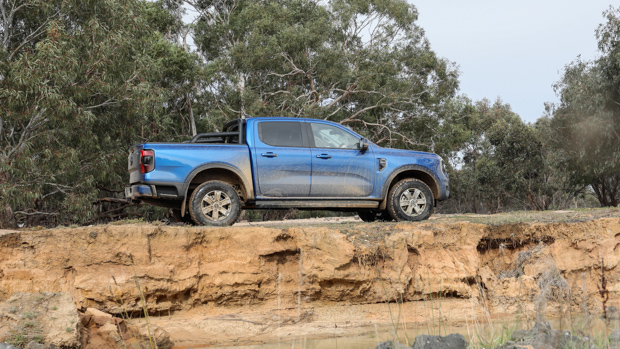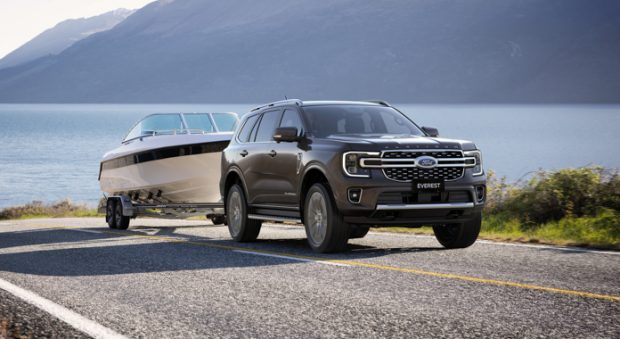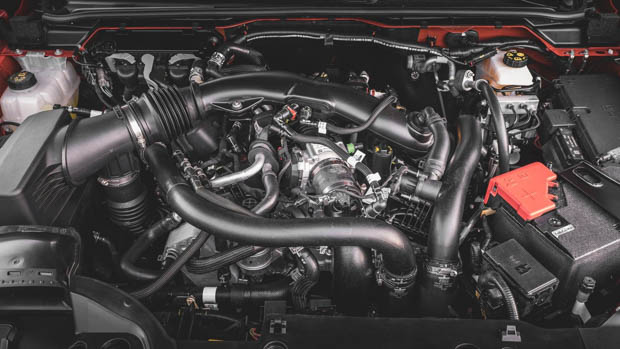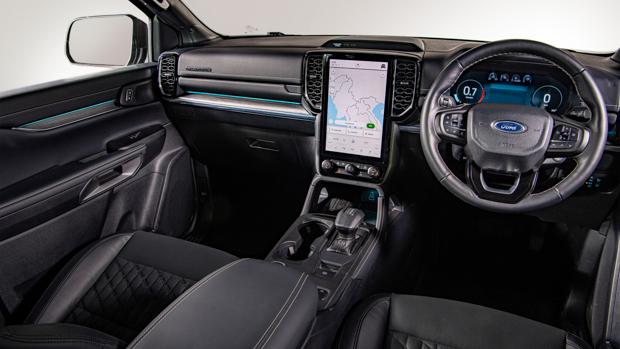-
Car Reviews
- Car News
-
Car Comparisons
Latest comparisons
- Chasing Deals
As the Everest shares its engines and platform with the Ford Ranger, it’s very likely that a hybrid variant could be in the works
The new Ford Everest large SUV could be gaining electric technology within the next three years.
At the launch of the Ford Ranger Raptor, Ford’s programs director of Icons and Ford Performance Ali Jammoul told Chasing Cars that “we could consider plug-in hybrid, mild hybrid or we could consider (full) EV” for the Ranger line-up.
And if the Ranger gets the electric treatment, it’s almost certain that an electrified Everest will follow along close behind.
The new Ford Ranger and Everest, sitting on the T6.2 platform, are capable of electrification, with Ford patenting the Lightning electric name to the Ranger, but it will be intriguing to see how the packaging of said electrics will be possible, especially in ute form.
Ford won’t be able to take up any room reserved for the Ranger’s rear tray with battery packs, and the same will be the case for the rear of the Everest where the sixth and seventh seats will need to be operational.
On the Volkswagen front, the related Amarok plug-in hybrid ute has been scrapped, with Volkswagen executives saying that the plug-in version had “unsatisfactory” electric range.
So it begs the question: will Ford go fully electric for the Ranger/Everest, or plug-in hybrid?
In an incredibly popular dual-cab market where owners often do interstate touring, covering thousands of kilometres, Ford must work hard to make electrification work for their customer base and blend it into the mainstream.
While neither of the Everest’s two powertrains have been hybridised just yet, the 3.0-litre turbo-diesel engine could be the pick over the smaller 2.0-litre twin-turbo diesel engine that is also available.
However, the twin-turbocharged ‘Ecoboost’ petrol V6 engine out of the Ranger Raptor may be the better hybrid combo.
The unit could one day compete with the twin-turbo hybrid petrol V6 engine out of the Toyota Tundra that might see the light of day installed in the next Hilux.
A hybrid Ford Everest will certainly be heavier than its ICE sibling, thanks to the fitment of the hardware demanded.
The battery will need to be installed somewhere under the floor, perhaps underneath the second row of seats, while the electric motors will need to be packaged within the transmission not only because of space constraints but for efficiency, too.
The other big thing is price. With the new Everest likely to cost over $80,000 driveaway for the top-of-the-range Platinum variant, a plug-in hybrid version could cost between $90k-$100k by the time on-road costs are factored in.
That would put the Everest out of the territory of the Toyota Fortuner and Isuzu MU-X and more in the realm of the Toyota Land Cruiser and Nissan Patrol in terms of cost.
All prices listed are before on-road costs.
Latest news
About Chasing cars
Chasing Cars reviews are 100% independent.
Because we are powered by Budget Direct Insurance, we don’t receive advertising or sales revenue from car manufacturers.
We’re truly independent – giving you Australia’s best car reviews.




